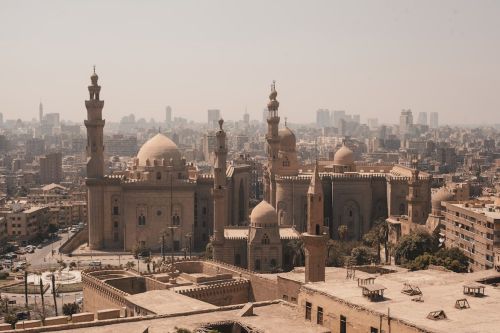More than five thousand years have passed since the first unification and formation of a larger statehood, but Egypt was inhabited by various tribes already 12.000 years ago.
During this long period of existence of various civilizations, countless monuments were created in Egypt, which attract millions of tourists every year.
However, Egypt is not only history but also many natural wonders such as unique deserts, oases, and coral reefs.
It ranks 29th in the world.
Cairo was founded in 969. It was built near Memphis - the capital of the ancient pharaonic state.
It was the Nile that allowed the first civilizations to settle in this area. Annual floods of the river fertilized the coastal areas, fertilizing them and increasing the possibilities of growing cereals.
The river is 6650 km long and is the longest in Africa and the second longest in the world. Until recently, it was believed to be the longest river in the world, but an expedition by the Brazilian Institute of Geography and Statistics showed that the Amazon is 105 kilometers longer than it.
Carvings found in rocks along the Nile and desert oases come from this period. About 8000 years ago, the first Neolithic culture took root in the Nile Valley.
This is the so-called early dynastic period in which the first two pharaonic dynasties ruled. They were called Tynica dynasties. Narmer (in the Egyptian language this name meant "sore catfish"), from Upper Egypt, is considered to be the first ruler of ancient Egypt. He conquered Lower Egypt (northern Egypt with the Nile Delta) and created a unified state.
Narmer reigned around 3150 BC.
It was most likely founded by Pharaoh Aha, Narmer's successor. Memphis is 22 kilometers from Cairo.
There are two of the tallest pyramids in the world: the Pyramid of Cheops and the Pyramid of Khafre. In total, there are nine pyramids in the necropolis. There is also a statue of the Great Sphinx in Giza.
There you can admire vast colonies of corals, anemones, and colorful fish such as the Imperial Moth, Addis Butterfly, and clownfish.
For fans of reef diving, the best choice will be those located on the Red Sea:
The most popular destinations are Giza, Cairo, Sakkara, Luxor, Alexandria, the White Desert, and the Siwa oasis.
The town itself is small, inhabited by about 5000 people. 45 kilometers north of the city is the White Desert National Park, where you can admire limestone rock formations carved by sandstorms.
Sand gazelles, dorcas gazelles, Barbary sheep, jackals, Rüppell's foxes, red foxes, fennec foxes, and desert cats live in the desert.
It is located in the southern part of the Sinai Peninsula and rises to an altitude of 2629 m above sea level.
Behind the mountainside, there is the Monastery of Saint Catherine, built around 530. According to tradition, in the place of the monastery, an angel appeared to Moses in the form of a burning bush.
Writing, black ink, papyrus, makeup, the oxen-drawn plow, the shadoof, the calendar, and irrigation systems are just some of the examples of the genius of Egyptian civilization.
Initially, it was a pictorial writing, which over the centuries evolved into more abstract forms, thus simplifying the writing. The Egyptians were the first civilization to write texts on a paper-like material called papyrus. Papyrus appeared before the 30th century BC. Other ancient civilizations used stones or clay tablets for writing.
The documents of an official with this name date back 4.5 thousand years and describe plans to build a temple (perhaps the Pyramid of Cheops) and import sandstone (perhaps the pyramid's cladding).
The document also contains the original name of the pyramid - Akhet-Khufu, i.e. Horizon of Khufu (Cheops).
They were carved in a temple on the island of Philae in southern Egypt. The inscription is dedicated to the Nubian deity Mandulis - the patron of the sky and the sun. The deity was depicted as a man with a hanging chest and wearing an Atef crown.
The inscription, carved in hieroglyphic writing, read:
"Before Mandulis, son of Horus, by the hand of Nesmeterakhem, son of Nesmeter, the Second Priest of Isis, for all time and eternity. Words were spoken by Mandulis, lord of the Abaton, great god."












